Tagged: ARRA
-
CreatorTopic
-
04/05/2016 at 5:08 pm #4642
 AnneMember
AnneMemberDrawing on your real-world experience, describe a time when stakeholders in your context were not involved as meaningfully as they could have been. What were the consequences and/or impacts on your research? (Be honest and challenge yourself … )
-
CreatorTopic
-
AuthorReplies
-
-
04/25/2016 at 12:31 pm #4896
 PeterMember
PeterMemberJames I here you GPP has come to save a situation that was in dire need of organization, involvement and participation.
Without GPP things were very confused.
-
04/25/2016 at 10:27 am #4894
 MarieMember
MarieMemberI would like to see more one on one engagement of stakeholders especially when it comes to pharmaceutical trials. Dialogue in trials of this nature is normally between relevant site staff and the sponsors and does not include community members. Jessica mentions something that I have touched on in earlier discussion and that relates to same voices representing different forums. We see that here too, however it need not necessary be ” conflict of interest” ( if I may call it that) as long as there is dialogue with the larger group and there is consensus about decisions made or opinions regarding a matter because you may find that those same people are the ones who are outspoken and willing to speak on behalf of the group. While that may be so, I would then want to implement mentorship programmes that will allow less outspoken individuals to be trained because the future of the strength of their CABS or organisations would be at stake once those who are always taking the lead fall away. At the end of the day it is our wish that there is no significant gaps between our members.
-
04/23/2016 at 8:27 pm #4853
 RichardMember
RichardMemberAs mentioned, I have no real experience with stakeholders engagement, but there is one thing I can remember that comes close, and happened in my previous job, that was when I forgot to agree with the investigators who was going to be the main author of the publication and who else were going to be mentioned as author and in what order. I assumed wrongly that this was not going to be a problem, being all professionals. The moment the article was going to be published 5 out 9 of the investigators found that they should be mentioned first. But the real trouble started after I had to tell them that only 5 investigators could be mentioned as authors, as instructed by my manager.
All most likely could have been avoided when I, at the beginning of the trial, engaged with all the stakeholders (investigators) and came to an agreement of whom and what regarding authorship.
-
04/22/2016 at 8:39 am #4841
 MarieMember
MarieMemberI would like to see a plan or draft of the different level where stakeholders can engage in protocol discussions, Like a lot of my peers have mentioned, sites differ and so will processes. The engagement is not set in stone but if we at least can have an idea of where engagement can be implemented it would help. That way individuals can air their views as to whether the process is working or not. Its not so much about where but how. These measure can ensure that better implementation processes are followed when a new protocol is developed. So setting biomarkers for future development is also achieved in this learning process. The other thing which I note that not many have talked about is community stakeholder representation on the REC’s. How many sites have members on ethics committees?
-
04/22/2016 at 3:17 am #4839
 JorgeMember
JorgeMemberDrawing on your real-world experience, describe a time when stakeholders in your context were not involved as meaningfully as they could have been. What were the consequences and/or impacts on your research? (Be honest and challenge yourself … )
Hi, Sorry I’ve been MIA.
I feel that we missed an opportunity to engage more transwomen stakeholders during the last proof of concept HIV vaccine study called HVTN 505. The study was designed to enroll 2500 MSM and transwomen in the US, however the study enrolled a mere 28 transwomen. We only enrolled 1 of those 28 at our site. I say we missed an opportunity because we received plenty of funding and support for community engagement from the HVTN and we applied for and received a substantial amount of ARRA* funding that also supported community engagement efforts. I hindsight, I feel we made the mistake of not engage transwomen early on in formative research, like focus groups and we did not develop an educational and recruitment campaign for transwomen stakeholders.
I feel a major consequence is that there were not a significant number of transwomen in the study to provide good evidence for questions that transwomen ask. We held focus groups among transwomen after the study was completed and a question has been, “How would the vaccines impact those on hormone therapy?” We also found ourselves learning how to engage and increasing our cultural competency after HVTN 505 was done. I feel another consequence is that we still have to gain the trust of transwomen as we embark in the AMP study, a study that includes transwomen.
-
04/21/2016 at 9:43 am #4833
 kennethMember
kennethMemberStakeholder engagement is key priority for us before any activities commence.You always want to have someone on your side whose opinions can relate with the majority of the people your interested in.It makes implementation of project tasks easier and much faster. The challenge is how far should we engage them.To what level ? The problem is sometimes they want to be the face of the study.They feel they should participate in everything. It becomes their agenda over the overall project objectives if not properly monitored.
-
04/19/2016 at 12:46 pm #4810
 MarieMember
MarieMemberStakeholder engagement may not be at the same levels for different sites but it is there. The challenge that we are faced with is how to ensure that it is practiced at the right time (pre-protocol implementation) as part of review process so that issues are ironed out before the protocol is approved and implemented, and also to ensure that this is standard practice across the board. I also want to see more sponsor engagement as opposed to the once off engagement that we experienced at our site with the P1104 study that is being conducted at our site. Problems were discovered and it was back to the drawing board but had interaction taken place the first time this would not have been the case
-
04/19/2016 at 11:34 am #4809
 AntheaMember
AntheaMemberIn the context that I have been conducting my research, a primary strategy described for engaging the community and involving them in the research process is through the CAB advisory mechanism. Community members who represent NGOs and other organisations in the setting in the research is being conducted are invited to become CAB members by research centre community outreach workers. These CAB members fulfil the crucial role of providing the community perspective in the research process. However, such a perspective, in which the mechanism for community engagement is primarily through the CAB is limiting as it is not clear to which CAB members represent all sectors of the community, who the community is that they are presenting and the extent to which message about the research filters through to maximum stakeholder groups who are affected by the research. These factors impact inter alia, trial recruitment, knowledge and awareness of the research and the ability to ensure that the clinical research takes into account the specificities of the socio-cultural context in which it is being conducted. Operational, ethical and community engagement imperatives, therefore, are not optimally aligned.
-
04/18/2016 at 10:53 pm #4798
 CynthiaMember
CynthiaMemberThe research conducted in my institution after being evaluated by the different regulatory bodies (ethics approvals) are presented to the Community Stakeholders (local health service providers) so that through them we can recruit participants in the various Researchs that we implement, so they become aware of the investigation but without making changes to the implementation. Sometimes happened that the health care providers do not attend research presentations and this hindered recruitment within their jurisdiction, in that case the project leaders visit care providers to share these information.
-
04/18/2016 at 1:21 pm #4792
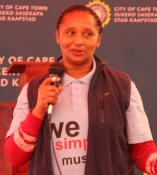 EllaMember
EllaMemberI had a outreach at a school and ask the local counsellor to meet me at the school,decause the gradde 12 and grade 11 was involve in a world TB colour in booklet
the counsellor also promise to buy a school bag for the best drawing at the school ,i went to the school and waited for the counsellor but nobody came
i had to apolize at school and just haned the books to all the kids who did thedrawing and still waiting for the counsellor .
for trust was the mean focus .
how can i involve the stakeholder again and the community are looking up to theres peope.
im going to set up a meeting involve the stakeholder agiain and then wait for the outcome -
04/14/2016 at 2:56 am #4769
 SantorraMember
SantorraMemberBernice: I have to admit that my jaw dropped a little bit when I read that there are times when certain people cannot be seen in public. That definitely has the potential to create issues with visit windows or emergency situations like serious SAEs. I’m interested in discovering whether or not these festival periods were taken into consideration before the start of the trial and what your team did differently for subsequent trials to ensure that they were prepared next time.
Mark: I’m extremely impressed by the involvement and initiative of your CAB. Do you happen to be able to share an example of one of your brochures? I’m just curious to see the work that they’ve done. I’m also glad you mentioned that your clinic moved at some point. There are talks about our clinic moving to a new building as well, and I don’t think that our PIs and other decision makers have even considered consulting members of the community in regards to the type of environment that they’d feel comfortable in. I’m thinking a survey about what they do and don’t like about our current location and service is probably long overdue.
-
04/14/2016 at 2:43 am #4768
 SantorraMember
SantorraMemberIn terms of having a negative impact on a particular protocol, our site has not had many issues when it comes to a stakeholder being less than fully or minimally involved. The closest occurrence that I can think of would be when we invited a city council member to one of our UCAB (United Community Advisory Board) meetings–both because she had not been present at a meeting in some time and because results of the HIV/AIDS 2020 summit and the protocol for the AMP (Antibody Mediated Prevention) Study were going to be discussed. This particular council member is very active in her district and takes pride in looking out for the best interest of those living there; especially since residents in some areas within her district are considered as marginalized or having a low socioeconomic status. Although she agreed to come to the meeting, she showed up late and missed a great deal of the background information about the AMP Study and missed the HIV 2020 discussion entirely. She did, however, hear one of our PIs speak briefly about funding the study. She then began asking questions about how much participants who decided to join would get paid and, she didn’t like the answer. When our PI asked how much she thought we should pay participants per visit, she stated something to the effect of $200 to $300 citing that $75-$100 per visit was too low for people in her community to get for joining an “HIV study”, especially when [our university] has billions of dollars. Although we understood her sentiment, she assumed that because we were affiliated with a university, that that meant we had plenty of money to compensate participants. She forgot about the cost of study materials, the study drug, and other costs associated with developing and implementing a clinical trial (and that we’re not funded by the university itself). An open dialogue about compensation and ethics during a clinical trial began after that, which is great; however, in the end, the councilwoman told us that she couldn’t, in good faith, recommend such a low-paying trial to people in her community. I am not really sure if she ended up expressing her point of view to her constituents because she has not been to another meeting and, as I mentioned, there has not been a negative impact on any particular protocol thus far in terms of recruitment. I do think, however, that not having a mutual understanding with such an important stakeholder could eventually lead to repercussions.
-
04/13/2016 at 6:29 pm #4766
 KathrineMember
KathrineMemberAs Haoyu mentioned, at trial sites that we are considering for the China PrEP trial currently being planned, there has been little / no meaningful community engagement. Our team has conducted some early formative research at two of the potential trial sites in the form of surveys and focus groups. We have also visited the potential sites to understand baseline clinical capacity and to begin to understand relationships between trial site and community. However after going through Lesson 2 it strikes me that 1) we have not done a good enough job following up with individuals and groups whom we engaged to maintain the engagement and grow the mutual respect, understanding and importantly, trust. And 2) we have not done a good enough job documenting these interactions. This matters for our own institutional recording to ensure that when staffing changes occur, we have a record of what has been done to date. Such reports / notes could also be shared back with community members who participated in these activities as a record of what we have done together and to ensure that they agree with our perception of what has taken place. Both of these are things I think we can make sure we put more emphasis on in the future.
-
04/22/2016 at 6:14 am #4840
 JorgeMember
JorgeMemberHi Kathrine,
Good to see you hear!
I share a similar sentiment in that I feel that I haven’t done enough as I go through these exercises, however I feel that applying the lessons learned will take my site’s stakeholder engagement to the next level. I commend you for taking steps to hold focus groups and trying to understand the relationship between the trial site and the community. It’s the beginnings of developing a good relationship.
As I read through the different posts, I thought about, “What can I do now?” I began to reflect on focus groups we held among transpeople last summer through fall. The data is still being analyzed, but will be ready by the end of May. My next step is to create the opportunity to share the data with the focus group participants and other transpeople. Perhaps that is something you can also do with the findings of your focus groups.
-
-
04/13/2016 at 12:46 pm #4760
Phumeza
MemberIt was when we established the CAB for the first time. the people who dominated every meeting were the Primary Health Care Nurses which resulted in other stakeholders not participating in the meetings, and thier input being missed. At the end of the day other stakeholders withdraw from the board and we were left with few members. We had to go back to the drawing board to try and correct this, and recruiting new members.
-
04/13/2016 at 7:12 am #4757
Isaac
MemberHello Learners/Anne, Sorry to appear late, i got an agent leave to attend to some personal challenges.
Coming to our discussion: My experience has been very good with stakeholder engagement although not the standard i have lean or i am learning with GPP. I as Zambart we have always involved with stakeholders in every study but the only difference at times we never involved all stakeholders but a few and we did not have a proper program or budget for stakeholders.
We still had serious challenges for that and that is;
– Information was not spread timely.
– Some times you go in the community, people do not know about the study because there is no one in the community who told them about the study and it means means you study from zero to introduce the study and the challenge is when it comes from unknown person, information is received with mixt feeling better when the community had got the information from their fellow community group or individual.
– Meeting targets becomes difficult when you do not involved all stakeholders.
– You ca hardly be trusted when you do not involve stakeholdersThank you
Isaac
-
04/12/2016 at 10:19 pm #4750
 FrankMember
FrankMemberIn my new company project, there are several collaborating bodies. In the early part of the collaboration, we would build into our project timelines, some additioanl tome for document review by our Partners/Collaborators. However, what we did not do was to provide theem enough time to obtain feedback from their network sites. This led to some issues with the sites ultimately accepting some fo the protocol requirements, as they had concerns/objections about them. Frank Tomaka
-
04/12/2016 at 7:28 pm #4749
 NancyMember
NancyMemberEngaging local policymakers and government officials is important for all of the work we do but especially for one of the programs we fund, which we hope will provide much needed evidence to inform policy on a specific topic. One of the local government officials in a country where we fund studies was not involved in a funding decision because it was previously another colleague of hers who was involved in the earlier decision-making process. This resulted in this new official not understanding the logic behind why we decided to fund a study. She did not think the study would answer the questions that would be useful to the government. In an effort to ensure that the evidence we fund is policy relevant (as this official saw it), we decided that it was critical that we fund another component to the study in question to ensure that local government officials would get the information they need. This ended up being more money from us and more time from the study team that they had not planned on. My organization was not completely at fault here as we did our best to engage key stakeholders from the beginning but I think it is an important lesson in understanding evolving dynamics of the stakeholder environment and looking forward, we learned that we can make a better effort to be involved when turnover happens. For example, in a similar future situation it might be helpful to suggest convening a meeting with the outgoing and incoming person (and us as well as our grantees) to discuss where things are, how things came to be, and what our plans are to ensure that we are all on the same page.
-
04/12/2016 at 6:44 pm #4747
 MosesMember
MosesMemberAt my work place, we strongly work in partnership with the International Partnership for Microbicides and Medical Research Council a trial implementing organization for IPM-HIV Prevention Ring. Our work involves active engagement of key stakeholders. In our setting, religious leaders, political leaders, cultural leaders, and key opinion leaders are key in this aspect . We have hard a meaningful engagement with them and so far, we have not met any resistance . The bottom line is that we have engaged these parties right from project inception.
-
04/12/2016 at 2:46 pm #4746
 Mahesh RamraoMember
Mahesh RamraoMemberVery interesting topics, I have never been involved with stakeholders engagements before but I think, lack of communication with research teams, implementer, and sponsors creates less interest towards research or trials. Failure in commitments, selfishness, non transparent environments at study site, less knowledge about study, lack of sufficient funding in research creates stakeholder’s mind to join to another trial site or forum and failure of our research. Faith, respect, money, knowledge about research , dedicated research team, honesty, transparency, and most important is respectful communications will make meaningful stakeholder engagements.
-
04/12/2016 at 1:22 pm #4736
Caroline
MemberDuring the set-up of one of our studies, we organized a CAB meeting with the known (at least known by the site) CAB representatives of one of our selected sites. The organization of the meeting was done by the site – as they had the contacts and were in the position to organize such meeting (which took place at the site). As a sponsor we did not have a lot of experience yet with interacting with CAB’s and local external stakeholders. Even though the meeting was organized by the site from a logistical point of view, the sponsor took the lead in providing the information and leading the discussions. Looking back, that meeting was quite successful. Not only are the site relationships with that site quite good and more informal, recruitment, quality and performance is slightly better than compared to sites in the same region. While – most probably – also additional reasons are at the basis of this difference, I tend to think that organizing this CAB meeting at this particular place, and with that the direct involvement of local subject population representatives, lead to a more thorough understanding of the site/patient relationship, better management of expectations and ultimately collaboration.
-
04/12/2016 at 1:17 pm #4735
 JessicaMember
JessicaMemberNkunda- Can you elaborate on why funding was required to regularly update stakeholders in the community?
-
04/12/2016 at 7:33 am #4731
 NkundaMember
NkundaMemberVarious stakeholders, both local and international, were engagenged at different stages of the planning phase of the study. Our team planned to provide updates on the progress of the planning phase and get input from the stakeholders on aspects involving community engagement. Unfortunately because of several reasons including the lack of a dedicated person to maintain communication with stakeholders – communication with the stakeholders was irregular. Some stakeholders became suspicious and thought the team was hiding information, others lost interest and stopped participating. However, once funding was approved and dedicated personnel hired, stakeholders are updated regularly and there is a constant stream of communication between our team and the stakeholders.
-
04/11/2016 at 8:31 pm #4722
 JoyceMember
JoyceMemberIn my context, there was a time when there was a microbicide study that did not do a lot of community and stakeholders engagement. so during the course of the study, there was a rumour that the study was infecting women with HIV. It was so difficult to dispel the rumour and the research ended up being discontinued.It then become so difficult to do any other study in the country due to that rumour and it had to take high profile medical people to convince the government to allow some further research in the country.
-
04/11/2016 at 4:21 pm #4720
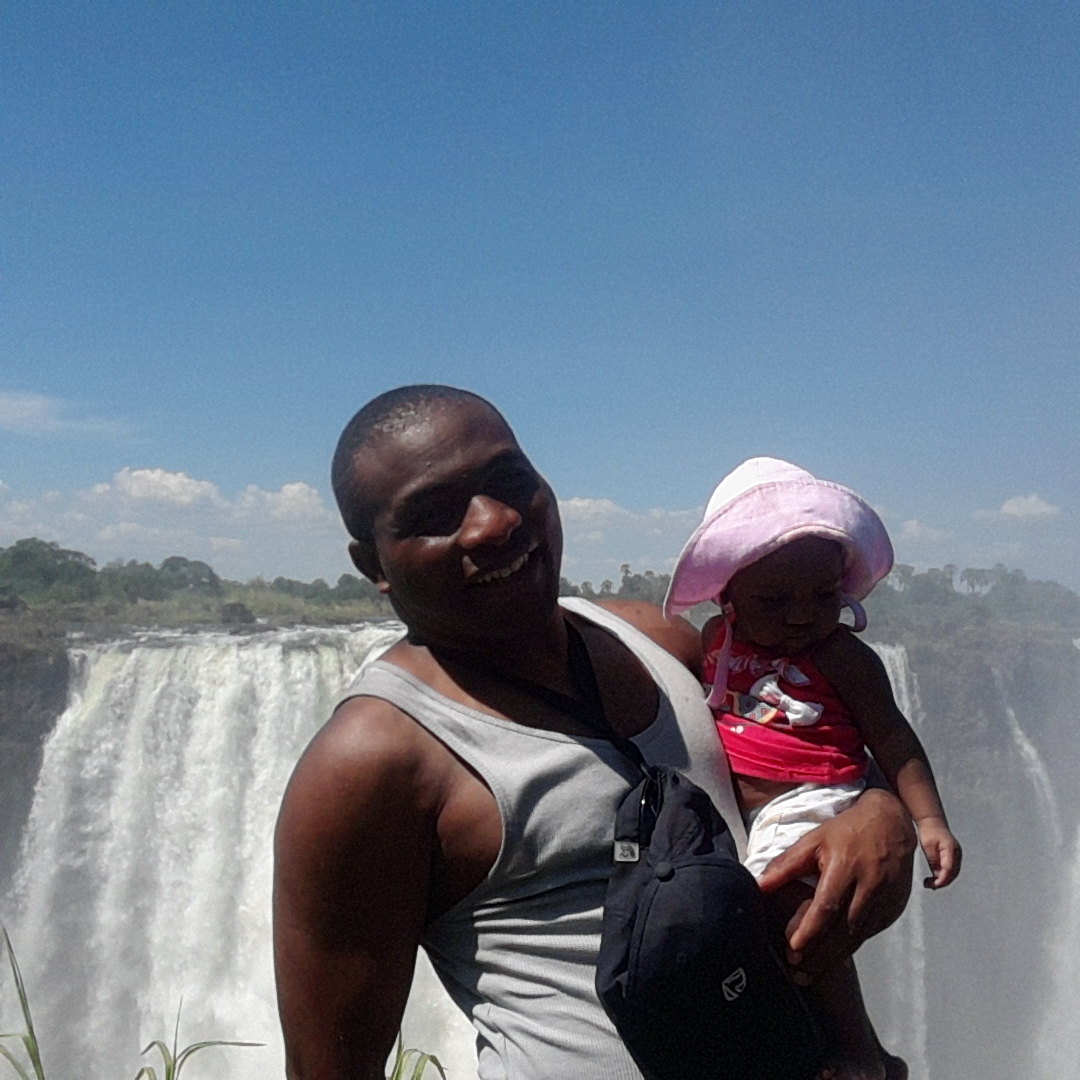 PemberaiMember
PemberaiMemberIn a study we carried out with interest in evaluating a livelihoods project we had supported, our involvement of stakeholders was very limited. Largely this was because we had not budgeted well on how many and who to involve right from the onset of the program. We did not experience much in terms of negative feedback but when results came out, we knew very well that these results lacked stakeholder endorsement.
-
04/11/2016 at 2:52 pm #4719
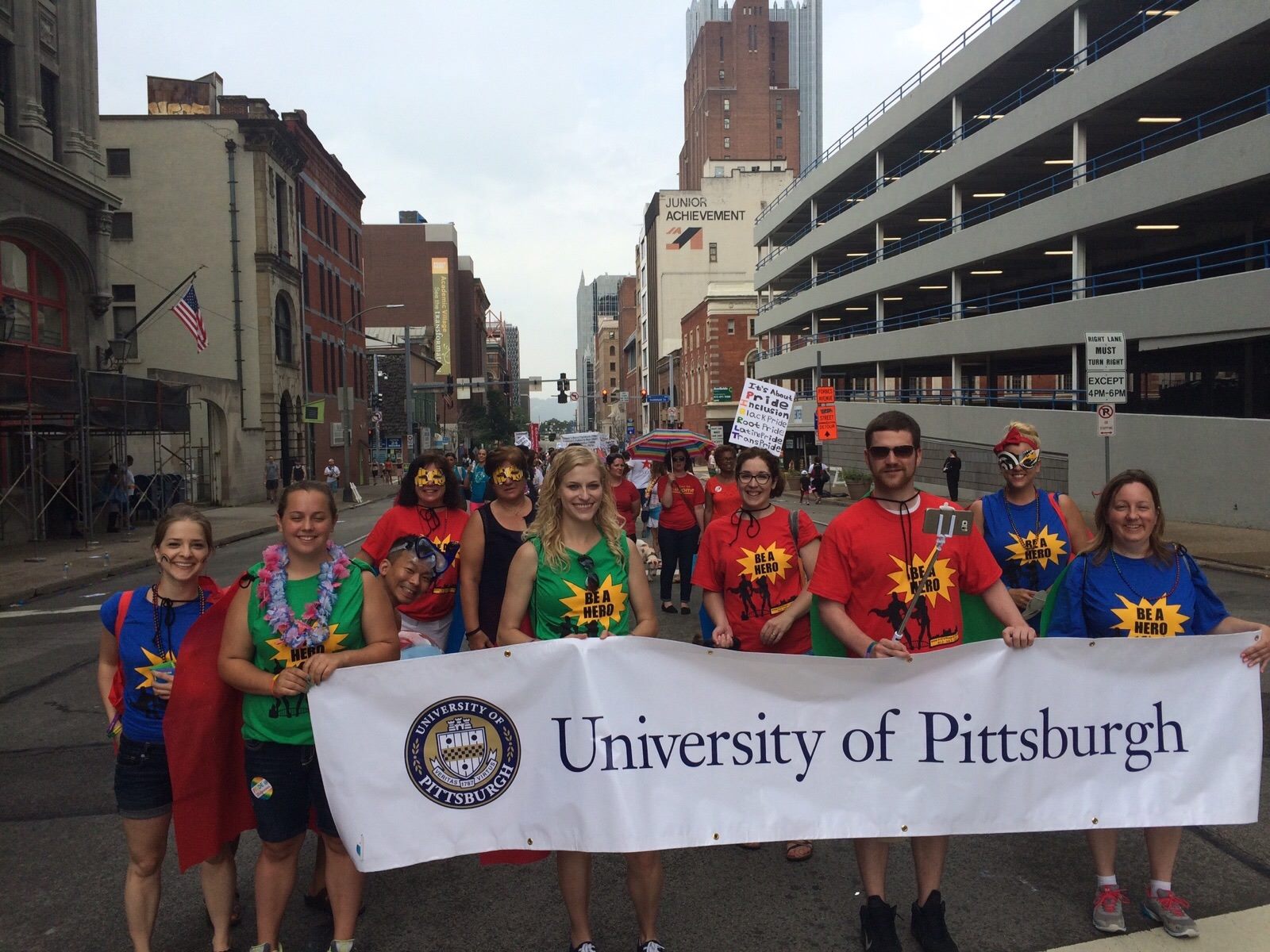 SherriMember
SherriMemberregarding comment about CAB and communication between CAB and team members. One area we struggle with as a site is how to make the process of getting our CABs input into our MTN protocols more systematic. Our CAB consists of members of the MTN and ACTG. I can see a very clear systematic way that the ACTG send protocols out to be reviewed by the CAB. I feel that this helps facilitate input and communication. There are specific formats for the protocol, forms to filled out and a central person responsible for collecting those comments. The MTN does not have the same systematic approach when a new protocol needs to be reviewed. As I said in my last post, I feel that we as a site (and the network as a whole) does a good job of getting community input, but I think the way it gets that input specifically from the CAB could be better. Its more of a “on the fly” type of approach. The team send out an email, the community educators reflect on it and send out requests for input from CAB members. But because of the timing, it is very seldom discussed at CAB meetings and there is no systematic way to get that input.
I feel that having a systematic, standard approach would help clear the line of communication from CAB to protocol team.
-
04/11/2016 at 2:43 pm #4718
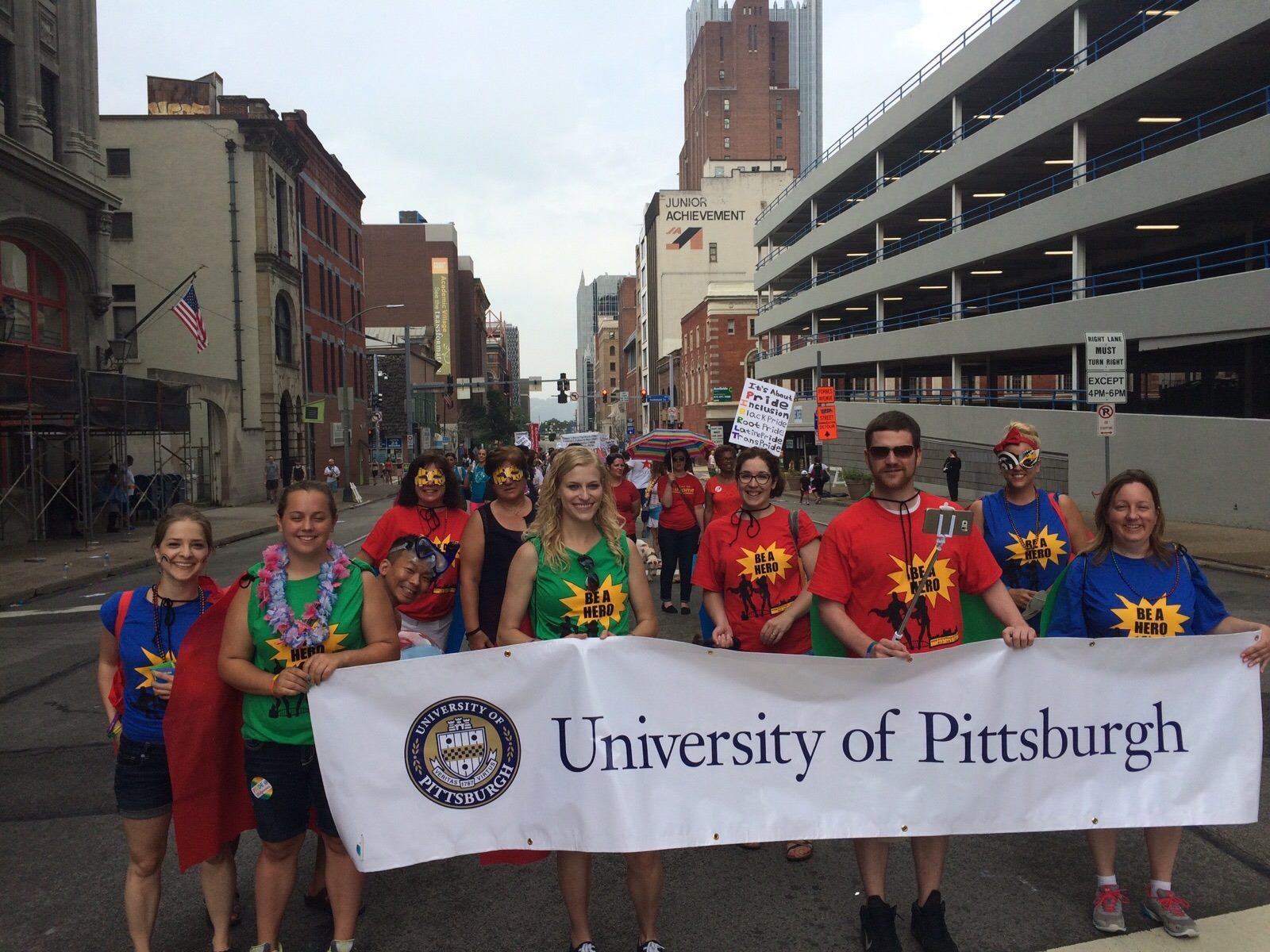 SherriMember
SherriMemberIve been thinking about this and I cannot come up with a time at my current position where I felt that stakeholders weren’t engaged before the trial started and there were adverse events as a result.
During protocol development the community educators, representatives and stakeholders are very active. I started my position as community educator right when MTN 017 started recruiting. While I wasn’t part of the pre-implementation, I learned from it and as a site we conduct all of our studies similarly.
As we move into the future of PrEP innovations, the MTN and all of our clinical research looks heavily on community input. After the MTN 017 trial the MTN held a 3 part meeting about how the network should move forward. 1 of the 3 sessions was entirely composed of community voices (myself included). In this session we discussed how men were fine with the product, but did not like the applicator. We felt that we needed better options for microbicides to move forward.
In part a result of those planning sessions, our site will be doing studies to see if there are other delivery options that are viable. MTN 033 will be looking at the possibility of using the gel sans applicator and the DREAM study looks at delivering the medication via enema.
-
04/11/2016 at 11:11 am #4717
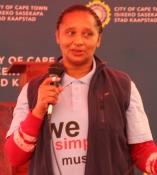 EllaMember
EllaMemberour stakeholders and cab meet once a month to discuss our wat forward and im very happy t add a traditional leader to my group
-
04/11/2016 at 11:08 am #4716
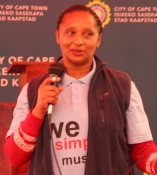 EllaMember
EllaMemberi was waitning for the stakeholder this morning to accompany me to a school but be never came
and no apology -
04/11/2016 at 11:04 am #4715
 EllaMember
EllaMemberI cant assses lessen 1
-
04/11/2016 at 8:51 am #4713
 LuckyMember
LuckyMemberCommunicating trial protocol modification to trial participants in the middle of a clinical trial
I guess the question is about process which will be followed. It is important that all staff members are aware/ trained on modification especially those directly working. In our situation when there is protocol amended we call all participants to the site and inform them on the changes and explain how this going affect their participation, allow questions and answers session between the study co-ordinator, investigator and liaison officer and participants. If its information that affect informed consent form then participants are made to sign new version however if they need understand modification , however for those participants cannot come in the week , weekend clinic visit are allowed and possible accompanied by actual visit to make easier for participants. Every effort is made to ensure that all participants are ultimately informed. During the ICF process participants are told in advance that there may be new information that come to light so this may require changes on protocol. We must remember that ICF is an on-going proceeds to accommodate such.
-
04/10/2016 at 9:31 pm #4712
Bamidele
MemberI am of the opinion that we repeat majority of the GPP topic areas used to ensure engagement of the trial participants in the first place and this means extra budget. This is where the contribution of the host institution is also very important
-
04/10/2016 at 9:27 pm #4711
Bamidele
MemberIn the middle of a clinical trial, occassion may warrant modifying some parts of the study protocol. How do we communicate this to our trial participants without compromising their retention or optimal engament?.
Bamidele -
04/10/2016 at 6:29 am #4708
Bamidele
MemberI have been fortunate to have a satisfactory involvement of our stakeholders in protocol development and implementation at three clinical trial sites I have worked. Except for one of the sites where timing schedule of IRB visit to the site for project implementation monitoring became an issue between the community leaders and trial participants. The IRB members were to visit the trial site to ascertain some monitoring indicators based on the study protocol and milestones. During these visits they were to meet all the community leaders around the trial site and trial participants. Although resolution was made regarding timing of visits but the low level of trial participants involvement was obvious for trading and other socio-economic commitment reasons. Although this challenge did not affect our trial outcome, we felt that repeated occurrence of similar issues could compromise the ethical standard set for our future trials at this site.
-
04/09/2016 at 1:21 pm #4706
 BerniceMember
BerniceMemberwithout taking into consideration the suggestion of some stakeholders not to embark on a trial during festive periods as those periods are not favorable, the key stakeholders did. There were some festivals where women and children were forbidden to be seen outside for some days,There was no meaningful involvement of stakeholders during that period.This resulted in reduce number of participants, inadequate feedback, not completing the research within the time frame and the outcome seriously affected.
-
04/09/2016 at 12:51 am #4705
 FrankMember
FrankMemberAs a Sponsor, we have little direct contact with CABs, and I am told that this is typical (that involvement with the CABs should happen by the site); I am very interested in being involved with national/regional stakeholders, such as advocacy groups. and to take every opportunity to enteract wtih regulators.
Moving forward, it will be important, but a big challenge, to build these different steps into the project timelines.
-
04/08/2016 at 8:26 pm #4700
 JessicaMember
JessicaMemberLucky- your issue of stakeholders being over committed is really interesting and something i can relate to! Many times we see the same community members volunteer for CABs and committees. Their eagerness leads them to be selected to protocol teams or to attend meetings. This can leave us in an interesting position where we think we’re engaging community but are actually engaging the same five or six or twelve voices over and over again. It is important to be mindful of the diversity of voices we have at a table. I liked that you raised knowledge retention as an issue. When you don’t have members who show up you have to repeat information to ensure they are up to speed, but this takes away from some of the planned and important engagement questions. This type of experience highlights the need for both a wide variety of stakeholders and a wide variety of mechanisms!
Haoyu- the situation you’re facing is unfortunately not unique. There are some researchers who equate “community engagement” with “participant enrollment” and for them engagement is a means to an end. But as you’re experiencing now engagement is actually something that must be done for its own sake. Building trust with a community is important. Later in the course we will discuss how this trust can impact trial enrollment, conduct and exit. Formative research is the basis of your stakeholder engagement plan so it is wonderful to hear that your group is starting to think about the issues of MSM face in that community. We will continue to talk about the issue of funding. We will look at forming partnerships so you can help sustain engagement even if funding is low and help to create metrics so you can demonstrate the value of your engagement efforts to funders.
Mark- It is hard to believe, even though i know these things happen, that healthcare providers were telling participants of a rumored drug shortage in order get them into trials. It is lucky that you and your fellow advocates have such a deep understanding of the importance of ethical research! I thought your post highlighted the important role of advocacy in research! We will discuss the role of the community educator a lot throughout the course, but this does not mean that advocates do not have an important role. Advocates can help bring the voice of a large group of individuals to light. They can be the watch dogs who ensure that a research team is engaging the community in robust, transparent and honest way!
-
04/08/2016 at 2:22 pm #4699
 EvelienMember
EvelienMemberWhen we run into problem with submission and approval process for our IMP to an authority, while that IMP was linked to the endpoints of a primary analysis (from which the outcome determines our protocol completion but also the set up of all trials using that compound). Due to the criticality of the shipment, a lot of pressure was put on different levels leading to a lot of frustration, a lot of miscommunication / minimal communication from some parties what in it’s own term worsened the situation as it was no clear how to proceed and how to get out of the web and get things moving. In the end the local people were involved at several levels and they received the necessary information using their internal networks. their support really weighted in the resolution of the problem and it has been acknowledged that we should ask for their support more and keep them more up to date so issues do not escalate to that level anymore. Although the intention to involve local levels better and more open now, it remains difficult to determine when to escalate as all parties do not want to receive more than needed information (due to the high internal workload at all parties).
-
04/07/2016 at 3:10 pm #4692
 MarkMember
MarkMemberI guess I am blessed that I have been involved in a lot of success. Part of that is because the institutions where I am have a long history of being dedicated to engagement, and that in the US funding for treatment and prevention is tied to various requirements for engagement. I can’t think of many bad examples but here are two \:
At one point, when the site was enrolling individuals for treatment trials that offered full treatment to HIV+ folks who had not been on medication before, a rumor that there were upcoming difficulties obtaining treatment drugs in the community found its way into staff recruitment conversations. This came to the attention of CAB members and we immediately approached the staff complaining that not only was this untrue, but that it was unethical to so blatantly make a connection between trial participation and access to treatment. We honestly believed that had this continued, serious ethical concerns might have threatened enrollment or even institutional support of the site.
In another case, our treatment clinic was sold and moved. The community was not consulted at all regarding the structural, regulatory, operational, and environmental changes that were to be made. As a result patients were very unhappy with things like service and the environment, and perceived that cultural incompetency, homophobia, and other forms of negative judgements were being played out in a contrastingly cold, austere clinical environment. A pop-up advocacy group was formed to voice these concerns at the highest level in order to bring pressure to bear. One of the things we did was make the case that the institution was demonstrating discrimination against the same communities to which it reached for research participants. The IRB was contacted, and for a brief moment research staff (who had not caused these changes) had concerns that successful enrollment might be threatened. When concessions were made, things cooled down, but ufortunately, while these tactics yielded results, they also left enduring hard feelings and damaged relationships on both sides.
I’d also like to give a positive example. The research site needed a new non-study-specific recruitment brochure. The CAB leadership offered to develop this at the grassroots level. The basic layout and content was developed using community process in a series of CAB meetings. We decided to only use non-professional, passionate advocates as models. We were able to get the design work done at low cost. We published multiple versions featuring different photos that might appeal to different potential participants. The CAB oversaw all of this work and the brochure is considered a big success and is still being used.
-
04/07/2016 at 3:22 am #4676
 HaoyuMember
HaoyuMemberWe are planning to conduct PrEP trial in China among MSM population, but our team has not conducted any prevention trials in this context before. In our engagement with MSM community groups at potential research sites, we have heard the CBOs telling us about their past experiences in working with research teams, where the researchers didn’t involve them in study design, came to them right before the project is set to start, and ask their help for recruitment. As a result, the CBO staff has very poor understanding of the project, so obviously they cannot clearly communicate to the potential volunteers, and that made recruiting very difficult. Also there wasn’t sufficient funding for community and study participant engagement during the implementation of the trial, so subject adherence and retention was also a big problem. So this type of information we get from our community engagement definitely underscores the importance of GPP implementation, and do it early!
-
04/06/2016 at 3:57 pm #4673
Irie
MemberIRIEBI
My organisation set up a model titled ‘community model’ in which community chiefs, opinion leaders, youth’s organistions were are involved in the activities implemented by the organisation in a community. During implementation of a project (though not research) there was a project’s component that consists of implementing income generating activities (IGAs). Even if some community chiefs were informed about the IGA, other representatives of the community were unaware. Therefore, the IGA manager ran the business like a personnal one and this resulted in fund embezzlement and failure of the activity.
-
04/06/2016 at 2:03 pm #4671
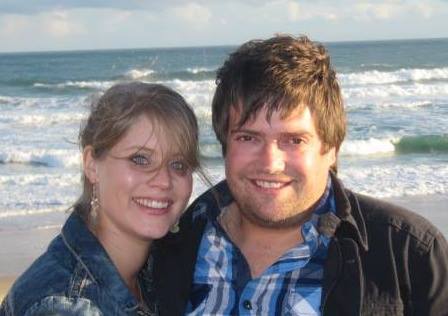 LarissaMember
LarissaMemberStakeholders could have been more involved in the initial phases of the clinical trial conducted within our community. This had effect on the recruitment, as we struggled to find participants. We noticed that the community was not familiar with research and decided to have information sessions whereby research was explained and the specific research protocol that we were going to conduct. When another research was initiated by our company, recruitment became easier, as the community was no longer doubtful about research and had a better understanding of what it means to participate in a research.
Kind regards, The Ndlovu Research Centre team
-
04/06/2016 at 12:40 pm #4670
 JamesMember
JamesMemberSincerely, as member of the CAB in my own site, i look back to times when stakeholders were not properly engaged. The Impact was not too good. There were misunderstandings form the start of the trial, there were no effective CABS even if a research in Nigeria 10YEARS ago says so. The real truth was at the end proper information was not passed to participants of research, research participants were used as guinea pigs to accomplish a research, The benefits, consequences of a particaular research were not well outlined to members of the stakeholders caucus especially community stakeholders. Research dissemination was even a taboo to be carried.There was no protection of trial participants inclusion injustice was a norm those days. Thanks to HIV Research Literacy that encompasses GPP as a Strong components. We would be no where in research methodology in 10years time if we werent part of this GPP course.
-
04/06/2016 at 12:00 pm #4667
 MarieMember
MarieMemberInteresting topic with different perspectives. Firstly different strokes for different folks, so how we engage individuals matters. Some may not be open to one on one discussion so may not say much at a forum of this nature, however the same individual may be very good at putting pen to paper and if given the platform could present very good feedback. This is one of the methods we encourage at our site, not just from CAB members or stakeholders but all who are interested and this can include study participants. What keeps this productive is that it is followed up regularly and communication is exercised. Keeping people informed at all times makes good dialogue between parties and encourages interaction
-
04/06/2016 at 9:29 am #4664
 PeterMember
PeterMemberI remember one instance while conducting the PrEP trial for HIV discordant couples.The HIV negative person was receiving study drug Truvada which was blue in color. Truvada is an Antiretroviral drug available in our country for HIV treatment but white in color. Some health workers who had not been properly engaged about our study could not understand how HIV negative people were taking HIV drugs.The fact that the drugs were blue(for study purposes)and not white made them doubt more.Some of the participants who came into contact with these health workers were told to stop the medication.This definitely affected the adherence levels of some clients.Later on we were able to rectify the situation by engaging as many health workers as possible.
-
04/06/2016 at 7:26 am #4663
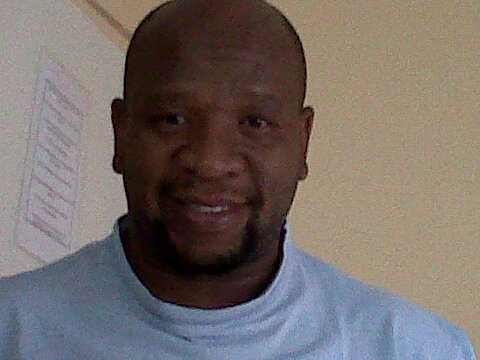 LuckyMember
LuckyMemberDear All
In most cases that I have come across there is no perfect participation by all stakeholders from any settings however in my encounter with such practise of non- participation or meaningful participant. The stakeholders were involved in too many forums or networks and yet you find that time were clashing and some stakeholders representatives were all over not willing to share with other colleagues and this could have been for selfish, inferior and lack of confidence to others. The weakness with community stakeholders is that they like to participate in everything for reason that obvious which is visibility and possible requirement by funder that they should show involvement and government stakeholders in most cases fail to attend to meeting due to time or if your organisation is suspected to be aligned to a particular party. The impact of such is that we have to conduct same activities in subsequent meetings which can be time consuming and issues relevant for that meeting agenda don’t get time they deserve. Also if we have stakeholders who are non-compliant there are forever left behind with developments and they fail to give feedback to their respective constituents and this portrays a bad image on site accountability to community and other stakeholders.
-
04/06/2016 at 7:20 am #4662
Alison
MemberIn my work context, we had a very engaging CAB meeting but have struggled to get a healthy flow of communication from the CAB members to the Project team. It was slow / poor resulting in their vital and useful feedback not being meaningfully inputted into the project. This resulted in a slow disconnect between CAB members who sometimes may see that their input wasn’t implemented and we lose their interest. On a larger scale, the project may have suffered delays because the CAB input may have resulted in a faster, more targeted outcome.
-
04/12/2016 at 1:43 pm #4737
 NkundaMember
NkundaMemberHi Jessica, yes sure. With the funding we were able to hire a dedicated person for the stakeholder engagement. This person was able to manage our database of stakeholders and coordinate activities such as consultations, workshops, outreach campaigns, CAB meetings – these re-ignited the interests of stakeholders and got the conversation going again. Most importantly, she kept to a schedule for engagement for each of the different stakeholder groups.
-
This reply was modified 9 years ago by
 Nkunda.
Nkunda.
-
This reply was modified 9 years ago by
-
-
AuthorReplies
- The forum ‘GPP Online Course Forum_March 2016’ is closed to new topics and replies.


